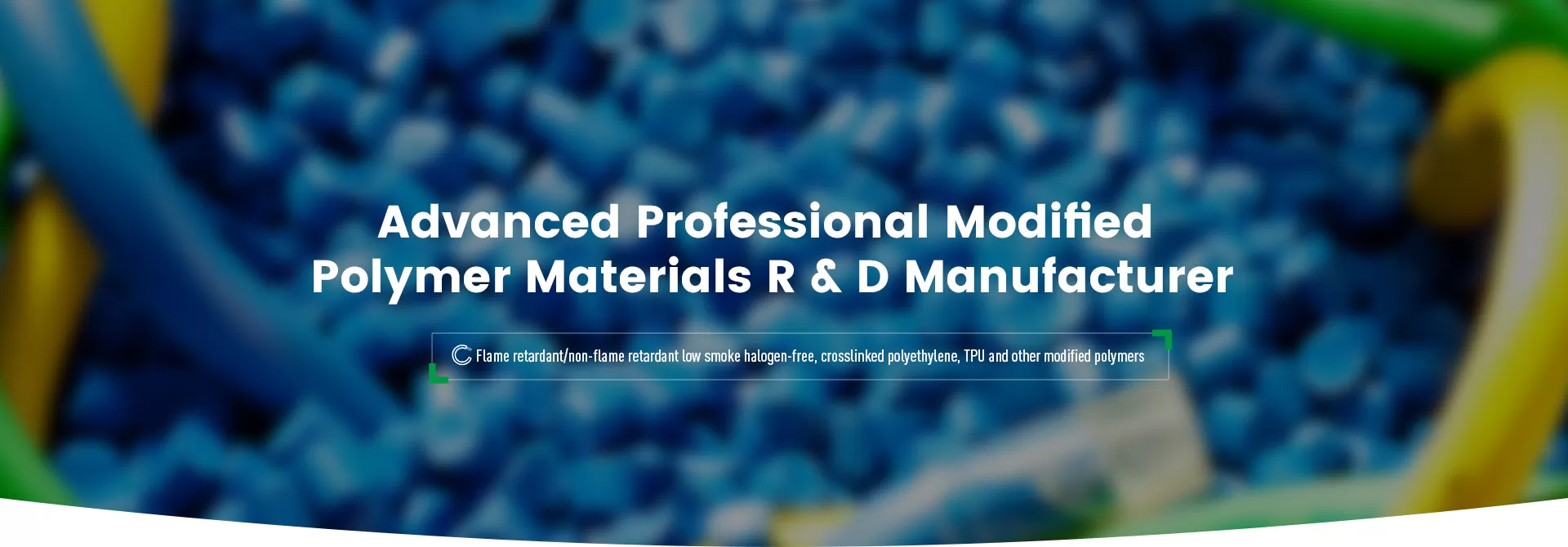
In the modern cable industry, material selection determines product performance, lifespan, and safety. Thermosetting and thermoplastic cable materials, in particular, represent two distinct material systems widely used in power transmission, data communication, and household appliances.
The former is known for its excellent heat resistance and mechanical stability, while the latter is favored by the market for its ease of processing and cost advantages.
Understanding their key differences helps us select the most suitable cable material for different scenarios, improving system stability and cost-effectiveness.
Thermosetting cable materials are polymeric materials that form a permanent network structure after processing and possess irreversible curing properties. Once cured, they will not soften or melt even under high temperatures.
Their excellent electrical insulation properties give them stable material characteristics, thus offering significant advantages in high-temperature and high-pressure environments. Thermosetting insulation materials are particularly suitable for cables carrying high currents or operating for extended periods.
The molecular structure of thermosetting materials determines their following characteristics:
* Non-flowing and non-melting at high temperatures
* High mechanical strength and resistance to chemical corrosion
* Low thermal expansion coefficient and resistance to deformation
* Good voltage resistance
Commonly used thermosetting cable materials include:
·Cross-linked polyethylene (XLPE)
Possesses excellent thermal stability and dielectric properties, commonly used in power transmission cables and high-voltage wires.
XLPE is further divided into radiation cross-linking curing, silane cross-linking curing, and chemical cross-linking curing.
·Silicone rubber (SiR)
Outstanding high-temperature resistance, stable operation within a range of -60℃ to 200℃, suitable for fire-resistant and high-temperature resistant cables.
·Epoxy resin
Commonly used in high-voltage cable joints and transformer windings, possessing excellent voltage resistance.
These thermosetting materials exhibit a three-dimensional structure after curing, making it difficult for internal movement or deformation to occur, thus maintaining long-term stability in harsh environments.
Thermosetting cable materials are mainly used in: high-voltage transmission lines, urban underground cable systems, industrial automation equipment cables, rail transit cables, and nuclear power facility cables.

Thermoplastic Material TPU
Thermoplastic cable materials are a class of materials that can be softened at high temperatures, cured at low temperatures, and can be repeatedly heat-melted. Unlike thermosetting materials, thermoplastics do not require chemical cross-linking; they rely on heat fusion to shape their structure. Therefore, they have better recyclability and relatively lower processing costs. Typical thermoplastic materials include PVC, PE, TPE, and TPU, suitable for most medium and low voltage wire and cable applications.
Their main characteristics include:
· Easy to process, supports secondary thermoforming
· Recyclable material, environmentally friendly
· Good flexibility
· Suitable for mass production
Common thermoplastic cable materials include:
Polyvinyl chloride (PVC)
Good insulation, widely used in household appliances, power cords, etc.
Flame-retardant polyethylene (PE): Excellent dielectric properties, commonly used in communication cables and coaxial cables.
Thermoplastic elastomer (TPE): Combines rubber elasticity and melt processability, commonly used in flexible cables and electronic equipment connection wires.
Thermoplastic polyurethane (TPU): Commonly used in charging pile cables, submarine cables, optical cables, and medical cables.
These materials also represent typical applications of thermoplastic plastics.
Thermoplastic cable materials are commonly used in: household cables and low-voltage power distribution systems, audio and video signal lines, communication cables, charging pile cables, fiber optic cables, medical cables, and internal wiring in general industrial products.
III. Thermoplastic Cable Materials vs Thermosetting Cable Materials:Material property comparison
· Insulation Performance Comparison:
Thermosetting materials generally have higher dielectric strength and insulation reliability, making them particularly suitable for high-voltage environments. While thermoplastic materials have good insulation properties, prolonged exposure to high temperatures or electrical charges may lead to performance degradation.
· Heat Resistance and Mechanical Properties:
Thermosetting materials maintain structural stability at high temperatures and will not melt or deform. Thermoplastic materials soften at high temperatures and are not suitable for high-heat applications.
• Processing difficulty and cost:
Thermoplastic materials have a low degree of processing and are suitable for large-scale production; thermosetting materials require a curing process, which increases manufacturing costs, but ensures long-term reliability.
| Properties | Thermoset Cable Insulation material | Thermoplastic Cable Insulation material |
| Heat resistance | Good | General, but adjustable |
| Processability | Average | Excellent |
| Voltage resistance | Excellent | General |
| Cost | Good | Depends on material type |
| Applications | Medium/High Voltage Cables | Low voltage, household wiring |
| Suitability | Cable Sheathing Materials, Cable Insulation Materials | Can be used in cable jacketing materials |
·Based on Application Environment:
For high-temperature, high-pressure, or high-humidity environments, thermosetting materials are preferred; thermoplastic materials can be used for general household or office wiring.
·Based on Cost Budget:
If the budget is limited and the operating environment is not demanding, thermoplastic materials such as PVC or PE are a more cost-effective choice.
·Based on Durability and Regulatory Requirements:
Cable material selection should follow national standards and industry testing. Critical sectors such as hospitals, airports, and subways often require the use of high-temperature resistant, low-smoke, halogen-free polyolefin or silicone rubber materials.
Thermosetting and thermoplastic cable materials differ significantly in physical properties, processing methods, and application scenarios. The former is safe and reliable, suitable for high-voltage power and industrial applications;
The latter is inexpensive and easy to use, suitable for the mass market and lightweight cable applications. When purchasing, a comprehensive evaluation should be conducted based on construction needs, operating environment, and relevant standard requirements.
Common examples include household three-core electrical wires, TV data cables, and USB interface cables, which mostly use PVC or PE as insulation materials.
XLPE and silicone rubber are commonly used in power cables, high-voltage transmission and transformation cables, subway or train lines, and high-voltage connection wires for electric vehicles.
Thermoset insulation refers to cable structures that use thermosetting materials as insulation layers, maintaining stable performance in high-temperature and high-voltage environments.
Cable jacketing is the outer protective material, usually thermoplastic, used to protect the internal insulation layer and conductor from mechanical damage and environmental corrosion.